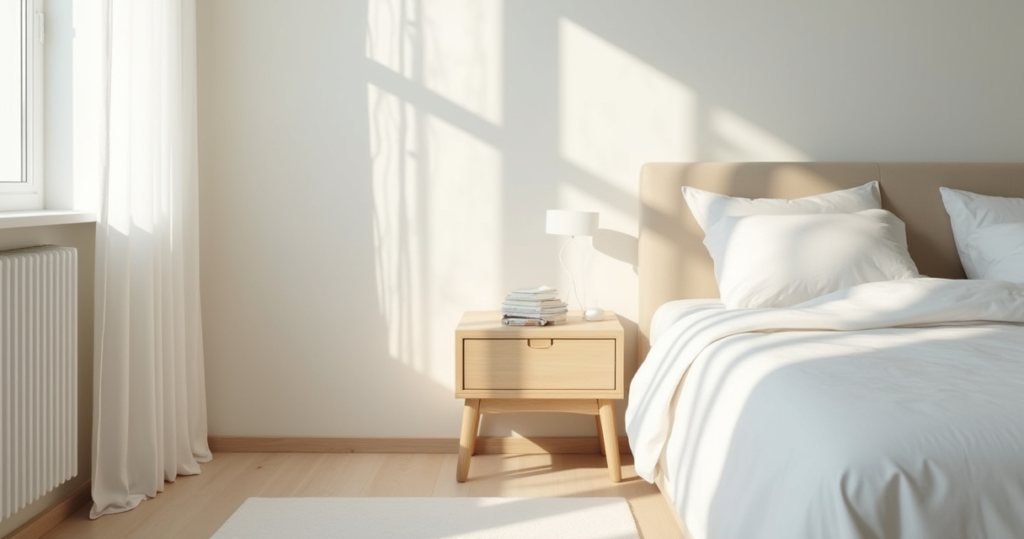You know what people always ask me? They ask how to make a bedroom ‘cozy’. And then they show me pictures of rooms drowning in a sea of beige knitted throws and pillows that look like distressed sheep. It’s a complete misunderstanding of the concept. True coziness, the kind that sinks into your bones and genuinely calms your soul, isn’t about adding more. It’s about creating a profound sense of order, peace, and personal sanctuary. It’s an atmosphere, not an inventory.
This isn’t just about making things look nice for Instagram. This is about designing a room that functions as a fortress against the constant noise of the world. It’s the difference between a pretty stage set and a space that truly allows you to exhale. Most of what you read online is just noise, a shopping list of trendy items. What actually matters is the feeling the room gives you when the door is closed. It should be a silent, loyal friend.
So, let’s get it right, shall we?
Foundational Serenity: Decluttering & Essential Organization
Before you even think about Farrow & Ball paint swatches or linen bedding, we must address the groundwork. You can’t put a ballgown on a pig and call it a princess. A room overflowing with life’s general detritus will never be restful, no matter how many cashmere throws you hurl at it. This first step is non-negotiable; it’s the architectural equivalent of good bone structure.
1. Ruthlessly Clear All Unnecessary Clutter
This isn’t just a spring clean; it’s an archaeological dig. Most people fail here because they’re too sentimental about things that bring them no joy, only obligation. The piles of unread magazines, the clothes you might fit into ‘one day’, the well-intentioned but ghastly gifts—they all create a low-level hum of visual static that keeps your brain on high alert. You must be merciless. This is about curating your life, not just tidying your room.
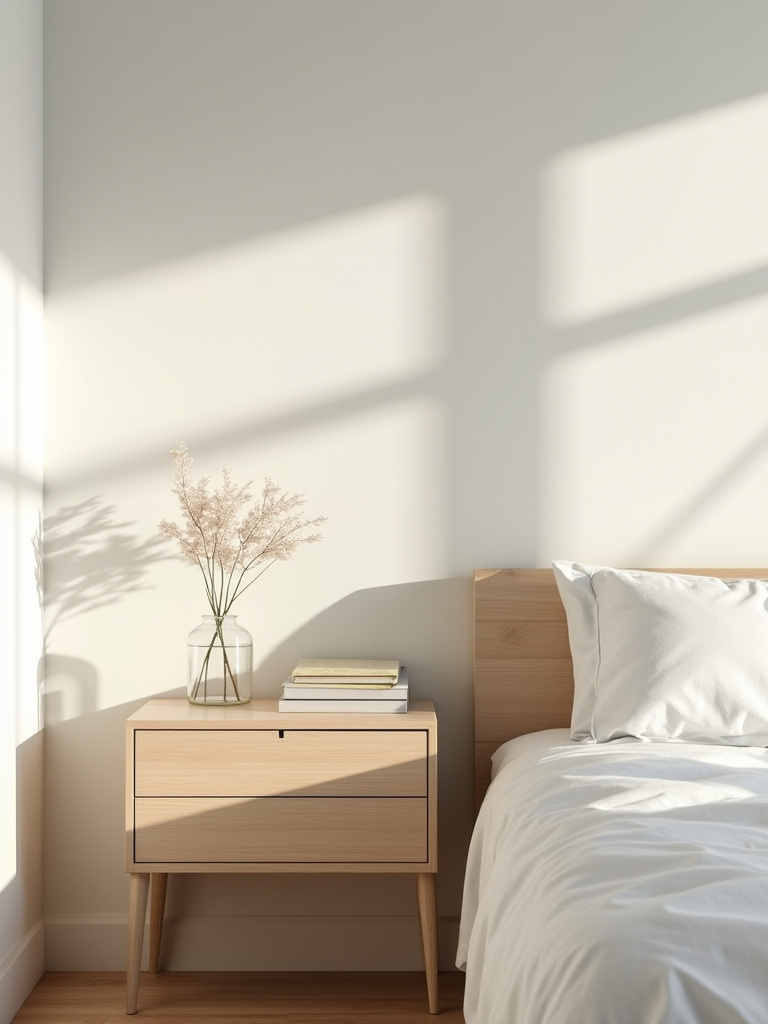
I once worked with a barrister whose bedroom had become an annexe to his office, with teetering stacks of legal briefs threatening to avalanche onto the bed. After a truly brutal cull, he told me that for the first time in a decade, he walked into the room and felt his shoulders physically drop. The room could finally breathe, and so could he. The real shortcut here isn’t a method, it’s a mindset. Be decisive. Ask yourself if an object serves your peace. If not, it has no place in your sanctuary.
With the clutter vanquished and a sense of space restored, we must now consider the room’s sovereign: the bed.
2. Optimize Bed Placement for Open Flow and Harmony
Everyone gets terribly anxious about this, but it’s rather simple. It’s a principle rooted in classical architecture and, dare I say, common sense – the notion that one should command a view of the room’s entrance from a position of rest, without being directly in its path. It’s a subtle assertion of security that soothes our most primal instincts. Putting a bed directly in line with a door is just bad form, creating a wind tunnel for both drafts and energy.
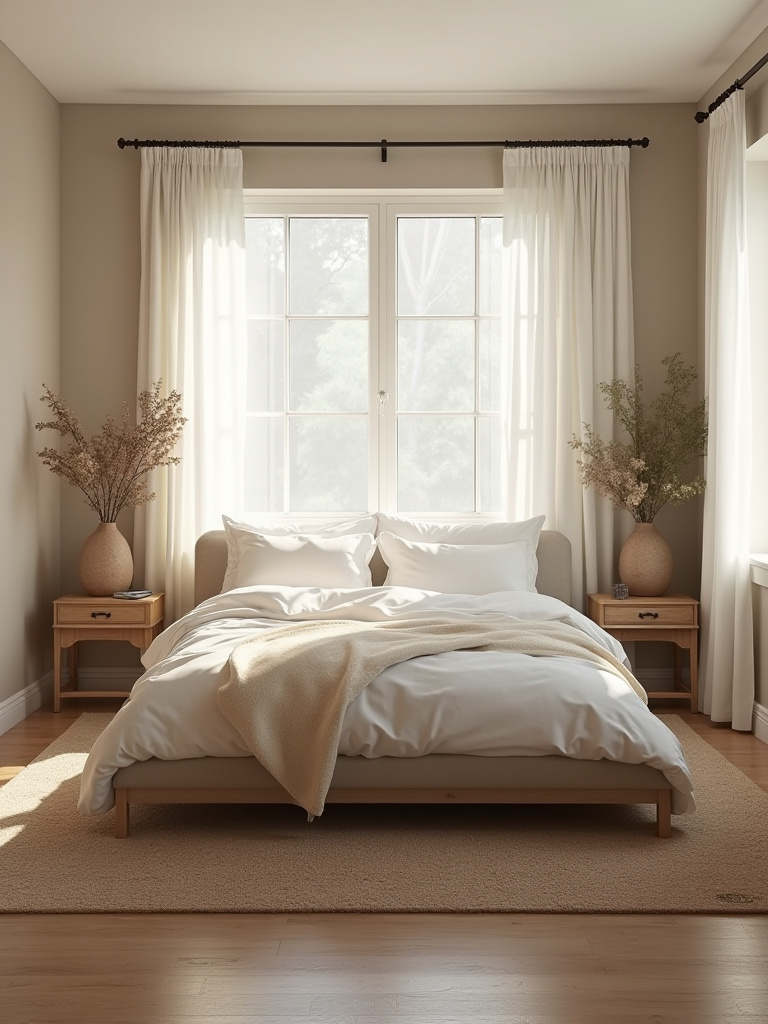
Your bed is the anchor of the room, and everything else should defer to it. The goal is to create clear, gracious pathways around it, not awkward little shuffle-zones. A former client in a smart Belgravia flat had her bed shoved against a side wall, making the room feel like a long, miserable corridor. By simply centring it on the opposite wall, we created a sense of grand symmetry that made the room feel twice as large and a hundred times more peaceful. Before you do any lifting, use painter’s tape on the floor to outline the bed and major furniture. It’s a dress rehearsal that saves your back and your sanity.
Once your bed holds court in its rightful position, we must civilise its immediate surroundings.
3. Streamline Nightstand to Essentials-Only
The nightstand is not a storage unit. It is a quiet companion for your slumber. Its surface should hold only the sacred trinity of bedtime essentials: a good lamp for reading, a glass of water, and perhaps one book—the one you are actually reading. Anything else is a distraction. A charging station, a mountain of skincare potions, yesterday’s teacup… it’s all visual chatter that screams of unfinished business.
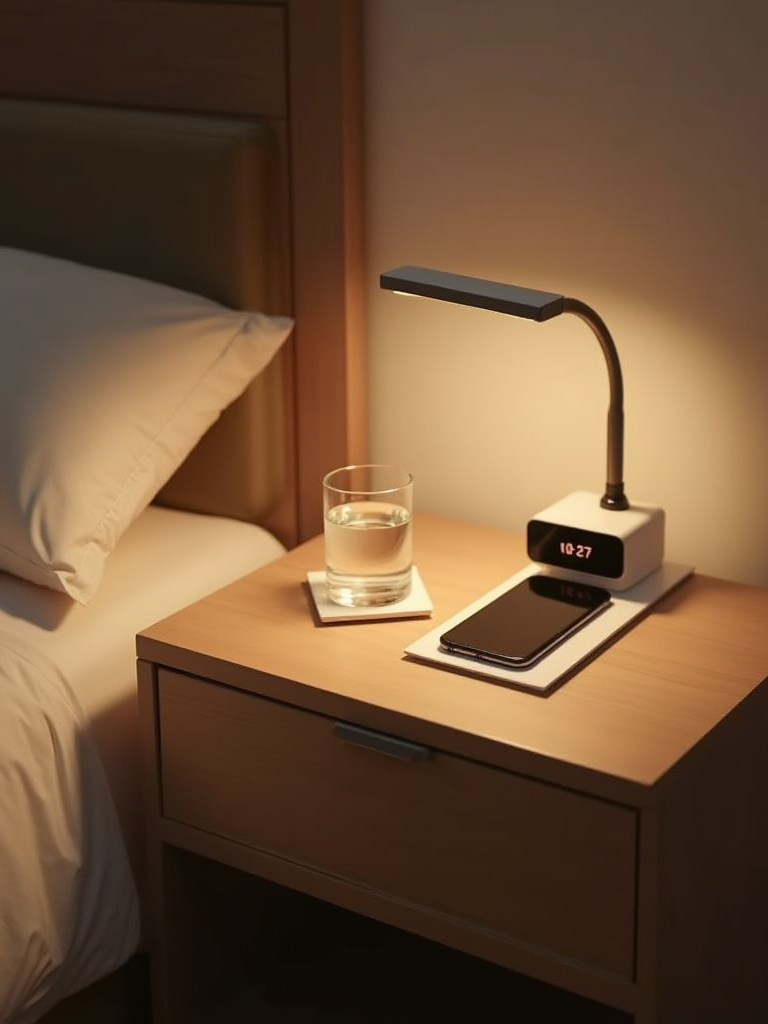
I used to think this was simple, until I saw a client’s nightstand that looked like the bargain table at a jumble sale. We edited it down to a lamp, her journal, and a single bud vase with a white rose. The transformation was instant. The BS everyone tells you is that you need special organisers and caddies. No. You need less stuff. The shortcut is to be fiercely honest about what an ‘essential’ truly is. It should serve your rest, not your daytime obligations.
This philosophy of designated placement should extend to all your daily necessities.
4. Create Dedicated Storage for Everyday Items
The single greatest threat to a serene bedroom is the pile of things that have no official home. The chair that becomes a wardrobe, the dresser top that becomes a repository for pocket contents. This creates a Sisyphean task of constantly tidying. The only sustainable solution is to give every single item a permanent address. As William Morris advised, “Have nothing in your house that you do not know to be useful, or believe to be beautiful.” This applies doubly to what’s left out.
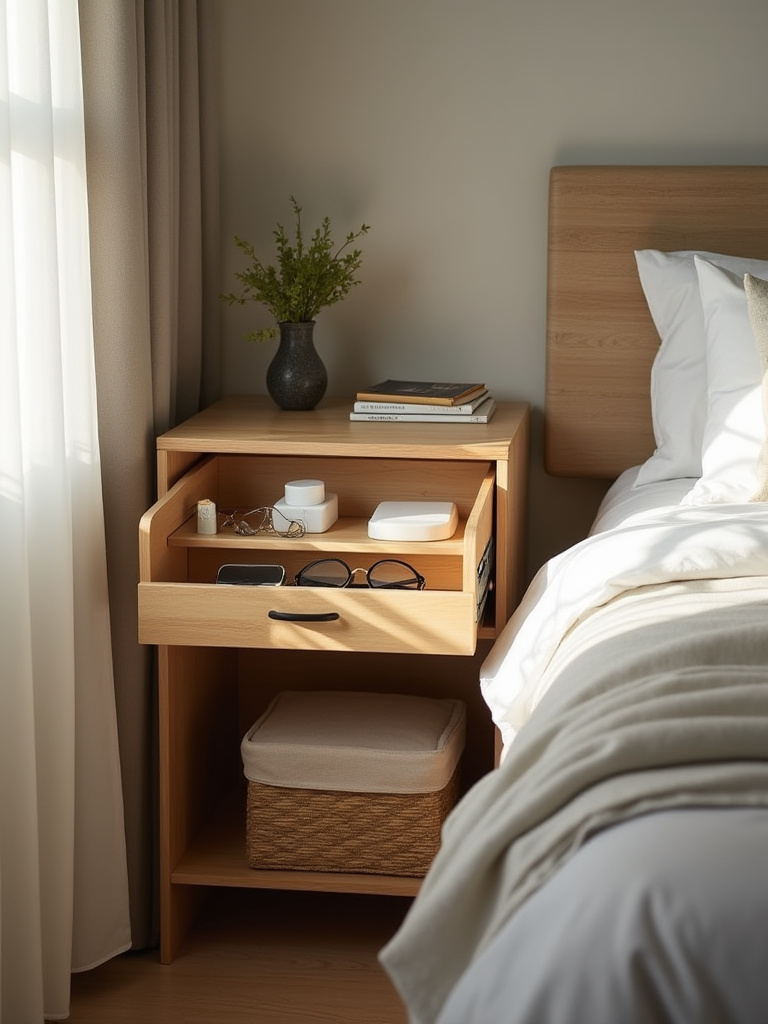
I learned this the hard way in my own first flat, a tiny space where chaos was always one dropped handbag away. The turning point was investing in a handsome ottoman at the foot of the bed for extra blankets and installing proper dividers in my dresser drawers. It sounds dreadfully dull, I know, but the peace of mind that comes from knowing exactly where your collar stays or your favourite silk scarf lives is profound. It eliminates countless tiny, frustrating decisions from your day, leaving your mind clearer for more important pursuits.
Now, for a particularly modern menace that must be vanquished.
5. Conceal Unsightly Cables for Visual Calm
Nothing shatters the illusion of a timeless, tranquil retreat faster than a Medusa-like tangle of white and black plastic cables. It’s the modern equivalent of leaving your underpinnings on the floor. It speaks of haste and a lack of care, and subconsciously tethers you to the digital world you’re trying to escape. Taming this electronic jungle is an act of aesthetic liberation.
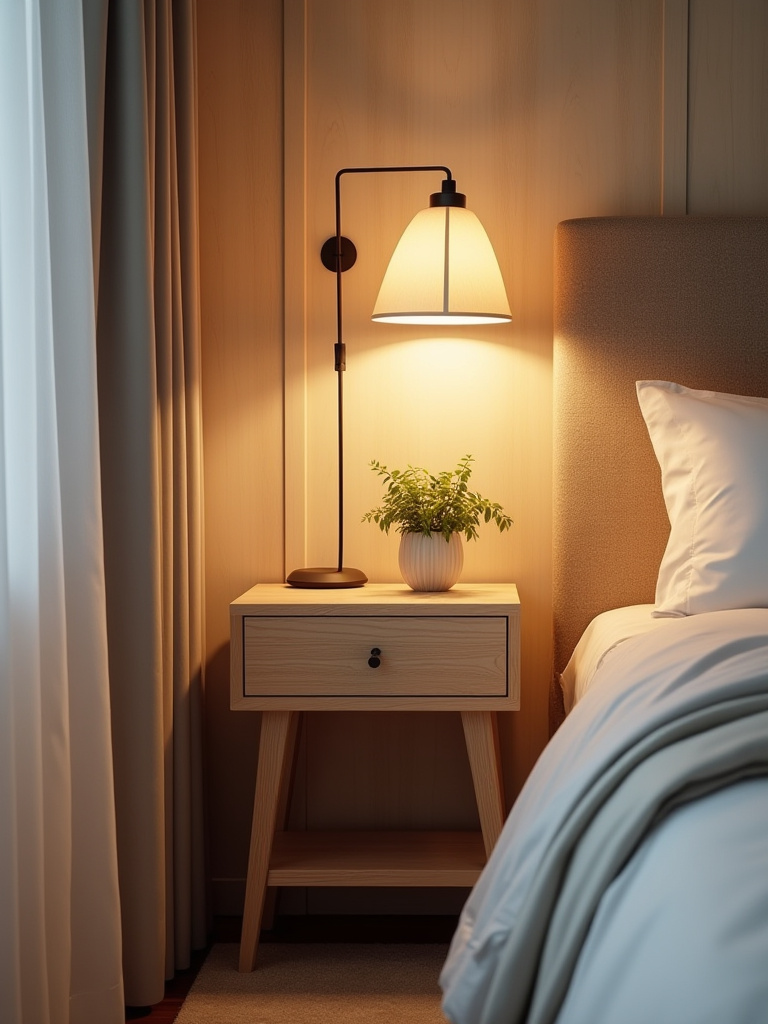
One simply must invest in handsome solutions. Fabric-covered cable boxes that blend in with decor, leather ties to bind cords together, or, for the truly committed, having an electrician chase them into the wall. I once watched a client nearly weep with joy after we hid the nest of wires behind her bedside table inside a simple, elegant box. She said it felt like a weight had been lifted. The noise isn’t just auditory; it’s visual. Eliminating it is one of the most satisfying shortcuts to immediate calm.
With the foundations of order firmly in place, we can now turn to the far more delightful task of seducing the senses.
Sensory Comfort: Visual & Tactile Enhancements
A room’s atmosphere is an immersive experience. Now that the space is orderly, we can layer in the elements that speak to our sense of touch and sight, wrapping you in a cocoon of quiet luxury. This is where the true art of coziness begins.
6. Layer Luxurious, Soft-Touch Bedding Textures
This is where people often go wrong, thinking more is more. It’s not about the quantity of cushions; it’s about the quality of the textures. Your bed should be an irresistible invitation. Start with the things that actually touch your skin: high-thread-count cotton or, my personal preference, buttery washed linen sheets. From there, you build. A beautifully weighted duvet, a soft woollen blanket, and perhaps a single, decadent throw in velvet or faux fur draped artfully at the foot.
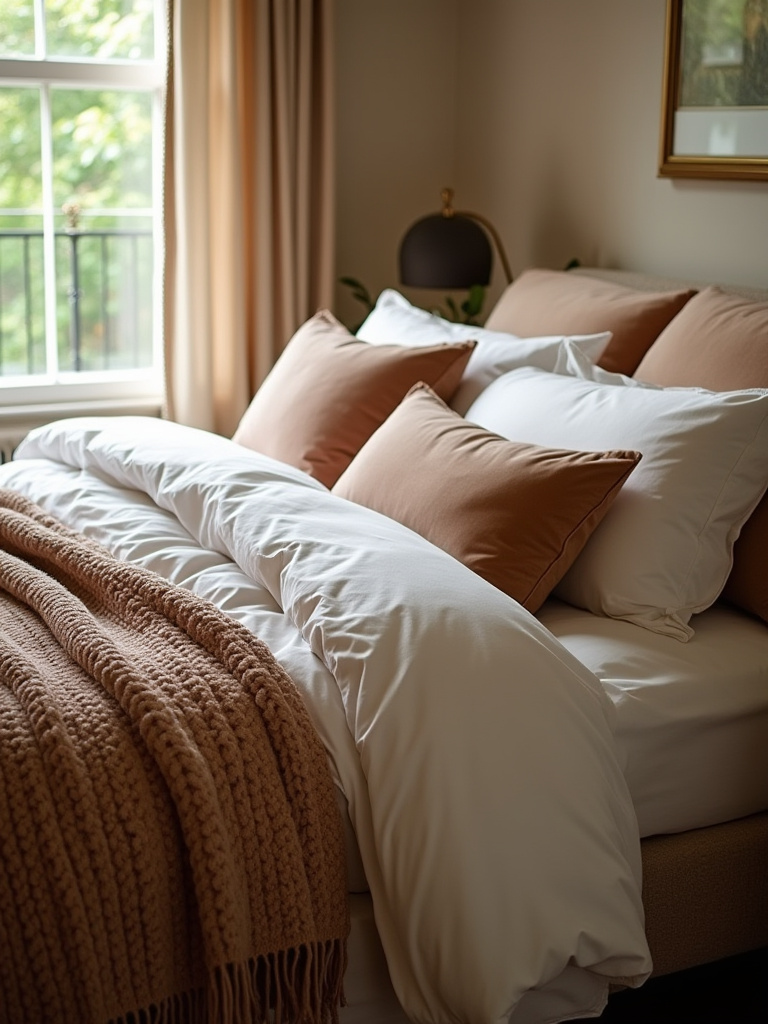
The goal is a bed that looks like it would sigh contentedly if you sat on it. The trick is to vary the textures—the crispness of linen, the plushness of velvet, the heft of a knit—all within a disciplined color palette. This creates a rich, tactile landscape that feels incredibly indulgent without looking chaotic. A well-made bed is a form of self-respect. Don’t skimp.
With the textures decided, the overall colour of the room must sing in harmony.
7. Introduce a Calming, Monochromatic Color Palette
The biggest mistake people make is thinking a monochromatic room will be boring. Done correctly, it is the absolute pinnacle of sophistication and serenity. The legendary designer John Fowler was a master of this, creating rooms in shades of off-white that felt more complex and alive than a riot of colour. Using varying tones and tints of a single, calming hue—a soft grey, a muted green, a warm parchment—eliminates visual jarring and creates a seamless, enveloping atmosphere.
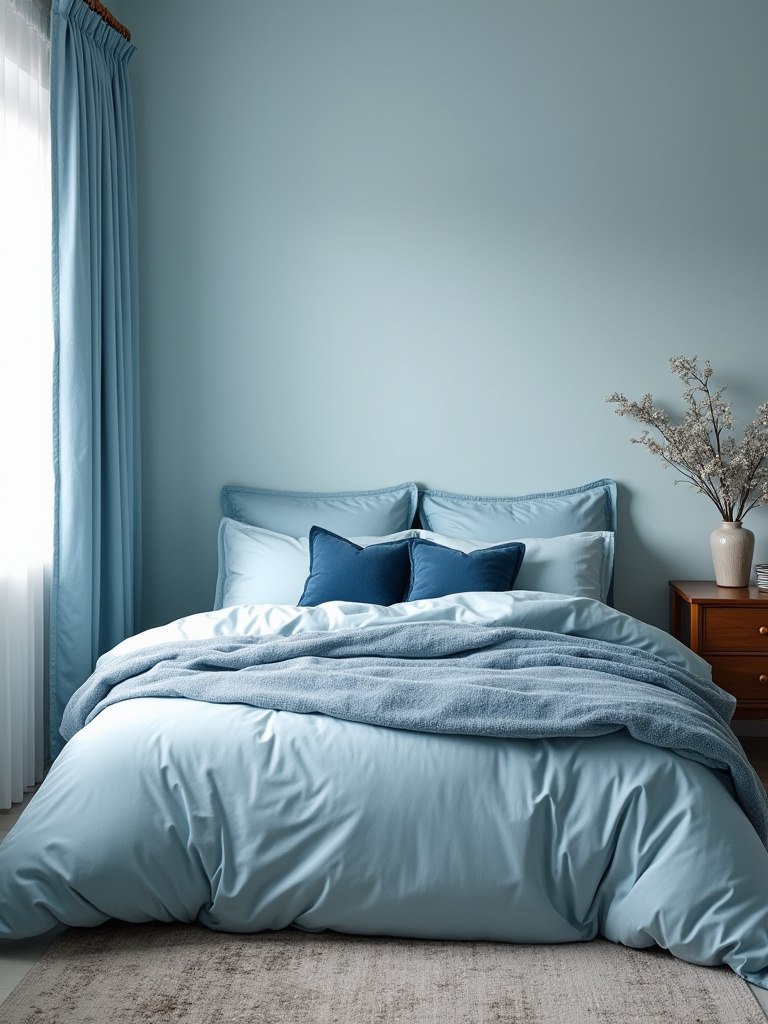
The key is texture. A monochromatic room devoid of texture can feel flat, like a hospital ward. But when you layer a pale grey wall with a slightly darker grey linen headboard, charcoal velvet cushions, and a slate-coloured silk throw, you create a space that is rich, deep, and impossibly calming. Your eye isn’t darting about; it’s allowed to rest. That visual silence is pure luxury.
To ground this ethereal palette, we need to feel something substantial underfoot.
8. Incorporate Plush Area Rugs for Grounded Warmth
Bare floors in a bedroom, however fashionable, have a certain chilly, clinical feel. A soft, plush rug is essential for grounding the space and providing that crucial first point of contact in the morning. Stepping out of a warm bed onto a cold, hard floor is a dreadful way to start the day. A deep-pile wool or even a high-quality synthetic rug acts as a textural anchor for the entire room.
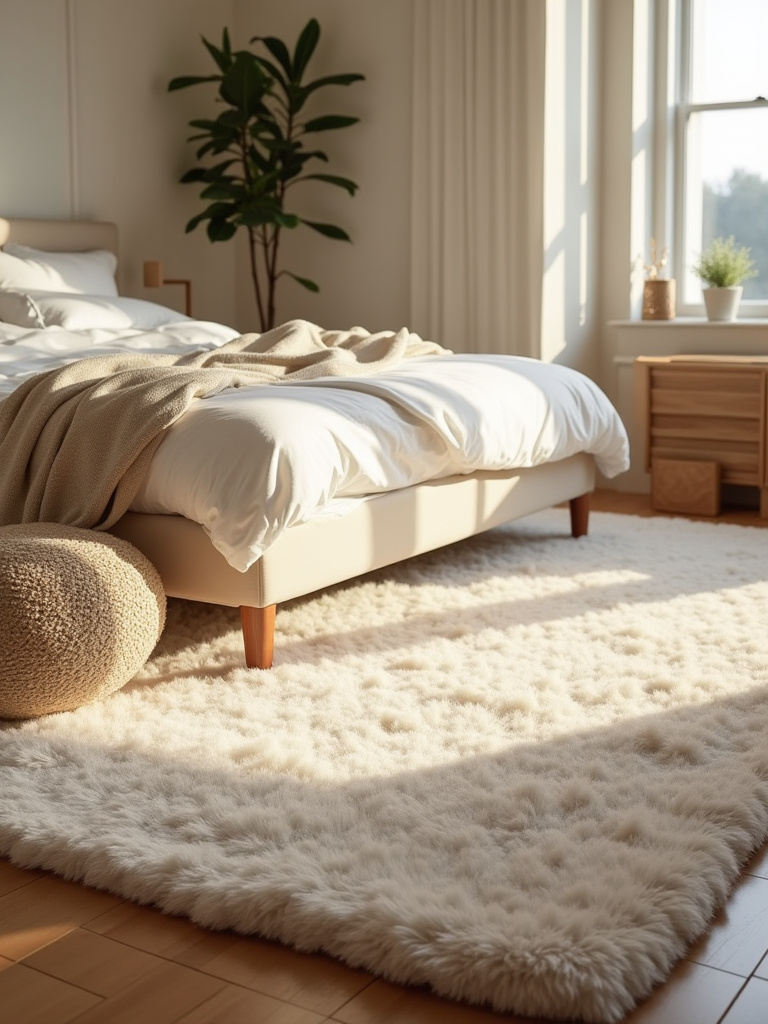
And it does more than comfort your feet. It absorbs sound, turning the room into a hushed sanctuary and killing the echo that can make a space feel cavernous and unwelcoming. For a London townhouse project, we placed a vast, custom-dyed silk and wool rug under the bed. It not only unified the entire design but instantly transformed the room’s acoustics, muffling the distant city sounds and cocooning the homeowners in a bubble of quiet.
Now, for the final sartorial touches.
9. Curate Soft Accent Pillows and Throws for Relaxation
Right, let’s address the pillow situation. This is not an arms race. A bed piled high with so many cushions that one requires a floor plan to get into it is a folly. The goal is curation, not collection. A pair of large Euro shams to anchor the back, your sleeping pillows, and perhaps one or two smaller, decorative cushions in a truly beautiful fabric—a slubby silk, a rich wool bouclé. That is all.

Throws and blankets should be chosen with equal care. They should feel wonderful to the touch and be available for use, not just for show. Drape a single, beautiful throw over the arm of a chair or fold a cellular blanket at the foot of the bed. They suggest comfort and invite you to pause and relax. It’s about offering an invitation, not issuing a command.
To balance all this softness, the room requires a touch of solid, earthy honesty.
10. Add Natural Wood Elements for Earthy Warmth
A room composed entirely of soft fabrics and painted surfaces can feel a bit flimsy, lacking in character and soul. Introducing natural wood—whether it’s an antique Georgian dresser, a simple oak bench at the foot of the bed, or even a set of beautifully grained picture frames—provides a necessary sense of warmth and permanence. It’s a nod to the Arts and Crafts movement’s reverence for natural materials and honest construction.
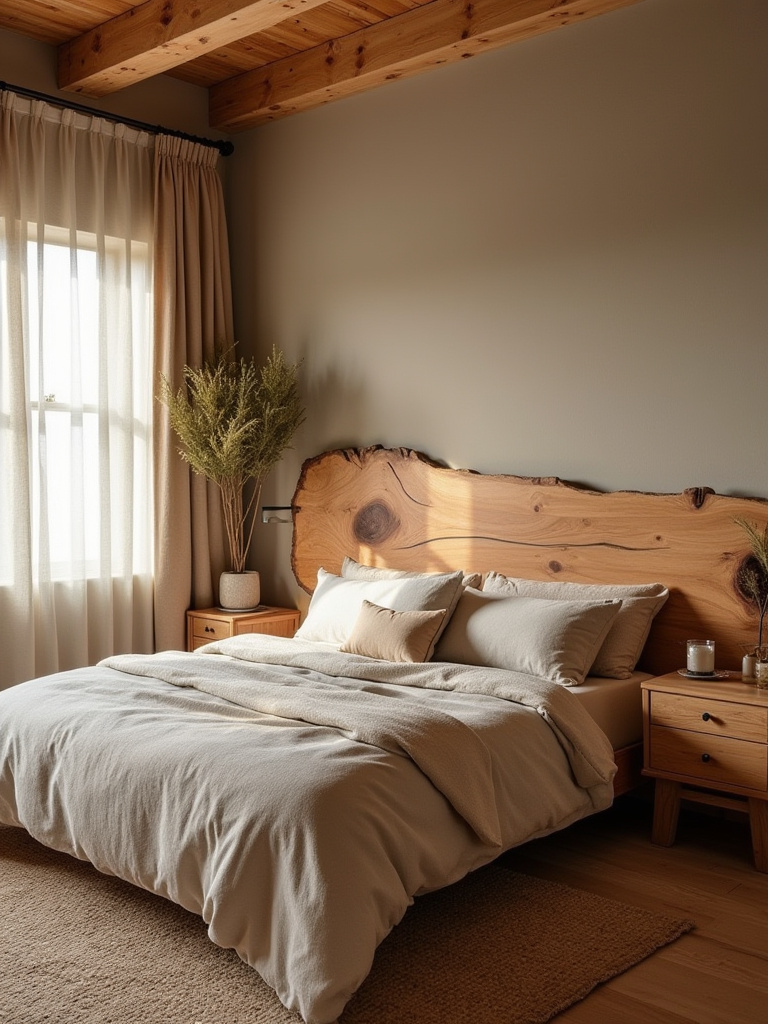
Wood has a grounding quality that connects us to the natural world, a vital antidote to our screen-filled lives. Last year, I sourced a stunning 19th-century burr walnut chest of drawers for a client’s minimalist bedroom. That single piece, with its rich patina and deep, swirling grain, brought the entire room to life. It gave the space history and a heart. Mixing different woods is perfectly acceptable, even encouraged; it creates a more layered and authentic feel, as though the room has been collected over time.
Now that the room looks and feels the part, we must perfect its invisible qualities: the light, sound, and scent.
Atmosphere Mastery: Lighting, Sound & Scent
This is the advanced class. A truly restorative bedroom is a multi-sensory experience. Getting the atmosphere right is what separates a merely pretty room from a sanctuary that actively improves your well-being. It’s about manipulating the environment to send gentle, consistent cues to your brain that it is time to unwind.
11. Master Dimmable, Warm-Toned Lighting
This is, without a shadow of a doubt, the most important element on this entire list. Harsh, overhead lighting in a bedroom is a crime against relaxation. Every single light source should be on a dimmer switch. It is a non-negotiable. Lighting dictates mood, and the mood we are aiming for is a gentle, flattering, golden-hour glow that mimics a setting sun. This signals our bodies to begin producing melatonin, the hormone of sleep.
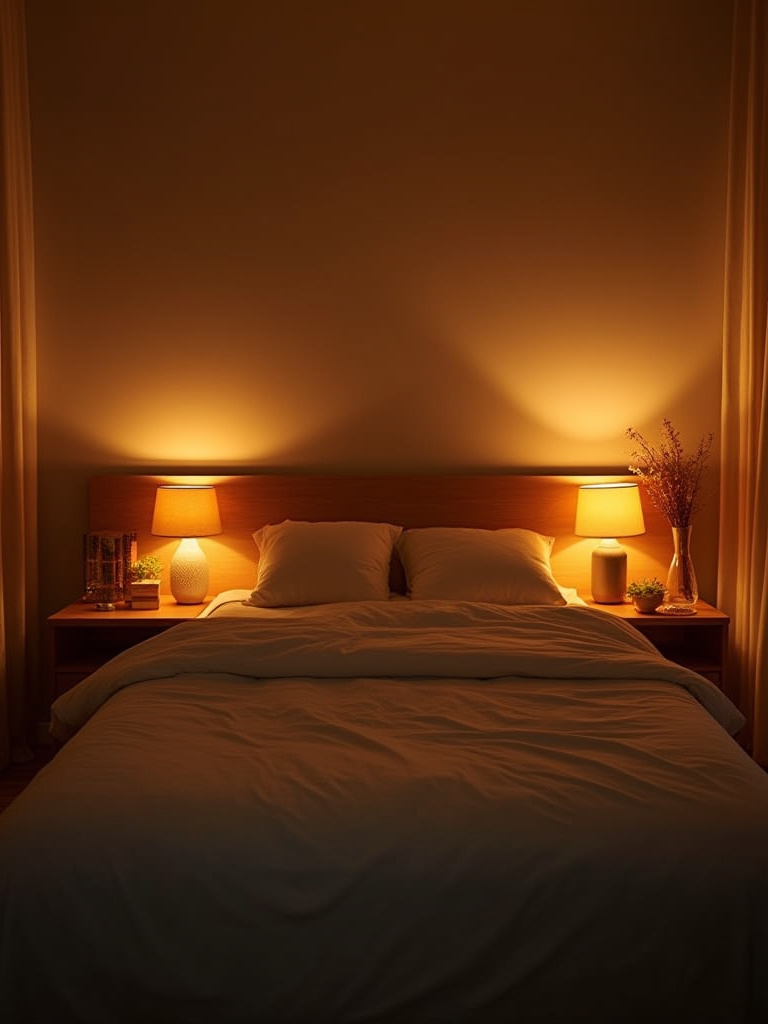
The bulbs themselves are critical. You must seek out those with a ‘warm white‘ tone (around 2700K on the Kelvin scale). The blue-toned, daylight-simulating bulbs that are so popular in kitchens are an enemy to the bedroom. They keep your brain buzzing. My shortcut is to put everything on a dimmer, use only warm-toned bulbs, and ensure you have at least three sources of light (e.g., bedside lamps, a floor lamp, a picture light) to create soft pools of illumination rather than a flat, uniform glare.
This primary lighting should be supported by gentler, more subtle sources.
12. Incorporate Soft Ambient Accent Lighting (Lamps/Strip Lights)
While bedside lamps are for the practical task of reading, ambient accent lighting is for pure atmosphere. It’s the secret weapon of the best hotel rooms. This can be achieved with a small, sculptural lamp on a dresser, an uplighter tucked behind a plant to create dramatic shadows, or the surprisingly effective trick of placing a flexible LED strip behind a headboard or under the bed frame.

This creates a soft, indirect halo of light that makes the room feel as though it’s floating. It eliminates harsh shadows and provides a gentle, low-level glow that’s perfect for winding down when you no longer need task lighting. A confession: I used to think LED strips were a bit tacky. Then I used a high-quality, warm-toned one concealed behind a headboard for a project, and the effect was so utterly chic and calming that I became a convert. It’s modern magic when used with discretion.
With the internal light perfected, you must now wage war on external light pollution.
13. Optimize Blackout Curtains for Uninterrupted Sleep
I am an absolute zealot on this point. Your bedroom should be a cave at night. Not dim, not shadowy—pitch black. Even the slightest sliver of light from a streetlamp or an early sunrise can disrupt your sleep cycles. The common mistake is simply hanging ‘blackout’ fabric; the real art is in the installation. The curtains must be wider and longer than the window frame itself, and hung on a wrap-around rod that allows the fabric to return to the wall, sealing the edges.

This creates a nearly impenetrable barrier to light. For a client who was a terribly light sleeper, we went a step further and added magnetic tape to the curtain edges and the wall for a perfect seal. She called it life-changing. It’s a bit of effort, I’ll grant you, but the quality of sleep you gain is immeasurable. Think of it as soundproofing for your eyes.
Now that your world is dark, let’s address what you hear.
14. Introduce Soothing Natural Soundscapes (Rain, Ocean, White Noise)
The modern world is deafening. The sudden wail of a siren or the clatter from a neighbour can jolt you from the deepest sleep. A consistent, soothing soundscape can mask these intrusions, providing a gentle auditory blanket. I’m not a fan of purely electronic white noise, which can sound rather clinical. I find the organic, fractal patterns of natural sounds far more calming—gentle rain, distant thunder, or the soft shush of ocean waves.
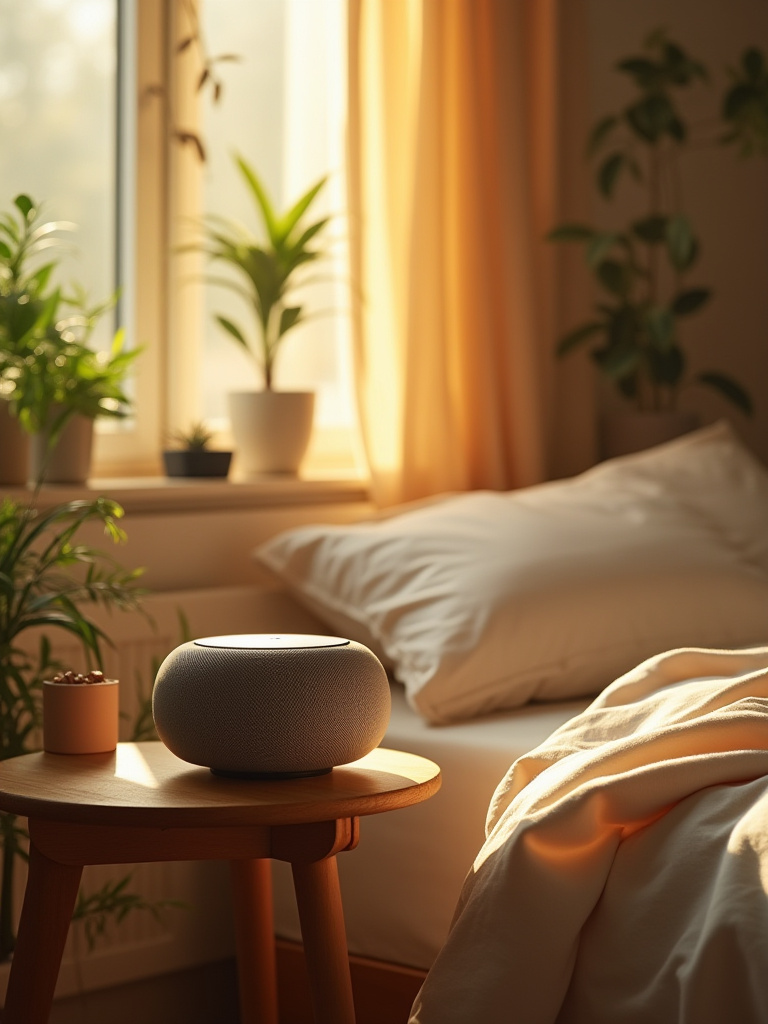
There are excellent apps for this, or dedicated sound machines that do the trick without a distracting phone screen. The key is to find a sound that is monotonous but pleasant, something your brain can latch onto without being actively stimulated by it. I spent a month in a remote cottage in the Scottish Highlands once, where the only sound at night was the constant burble of a nearby stream. I have never slept better. This is an attempt to replicate that ancient, soothing lullaby.
And finally, for the most evocative of all the senses.
15. Infuse Calming Essential Oil Aromas via Diffuser
Scent is intrinsically linked to memory and emotion. A signature bedtime aroma can become a powerful psychological trigger for relaxation, cueing your brain that the day is done and it’s time for rest. An ultrasonic diffuser is a far more elegant and subtle solution than cloying plug-ins or the fire hazard of a forgotten candle. A gentle mist of lavender, chamomile, sandalwood, or frankincense can utterly transform the room’s character.
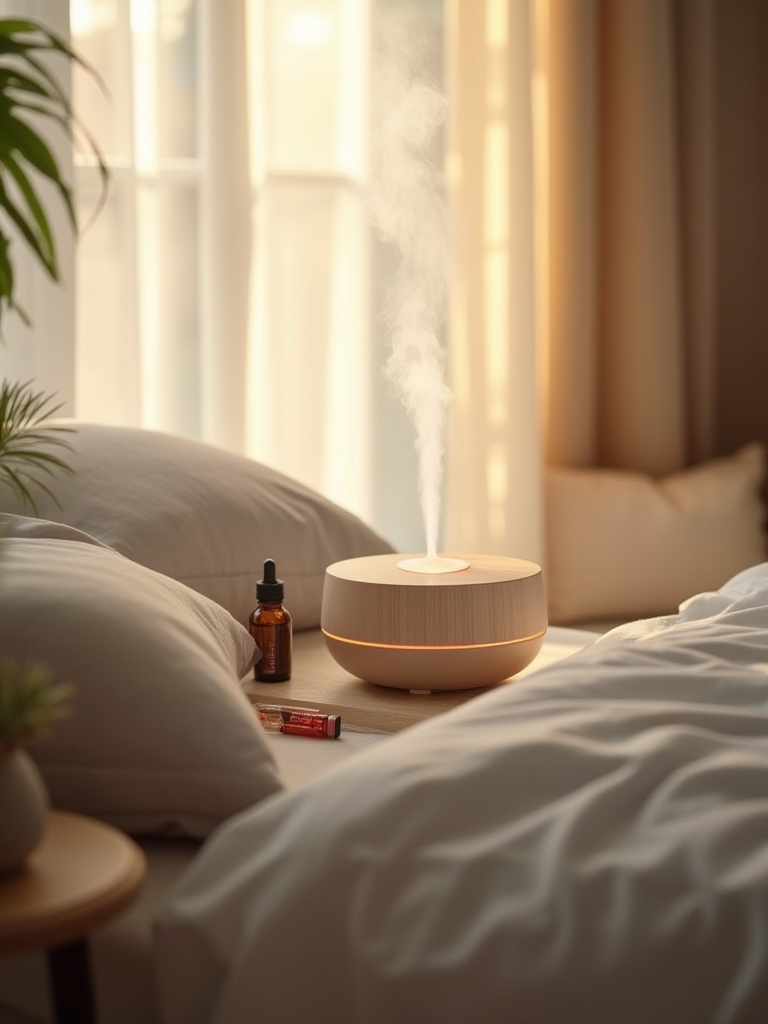
The key here is restraint. The scent should be a mere whisper, not a shout. Just a few drops of high-quality essential oil are all that is needed. I have a client who diffuses a blend of lavender and cedarwood for an hour before bed every night. He says the moment he smells it, the tensions of his day as a City trader begin to melt away. It’s a Pavlovian response for peace.
With the atmosphere perfected, we turn to the personal touches that make a sanctuary uniquely yours.
Personal Sanctuary: Intentional Design & Wellness
This final phase is about embedding your personality and well-being rituals into the fabric of the room. A sanctuary isn’t just passive; it should actively support a more mindful way of life, tailored specifically to you.
16. Display Minimalist, Meaningful Personal Decor
This is the antithesis of the cluttered mantelpiece. It is the art of displaying a few, carefully chosen objects that hold genuine personal meaning. It could be a single, beautiful photograph, a piece of sculpture you bought on a memorable holiday, or a beloved heirloom. By giving these items space to breathe, you elevate their importance and allow them to radiate their positive energy without getting lost in a sea of visual noise.
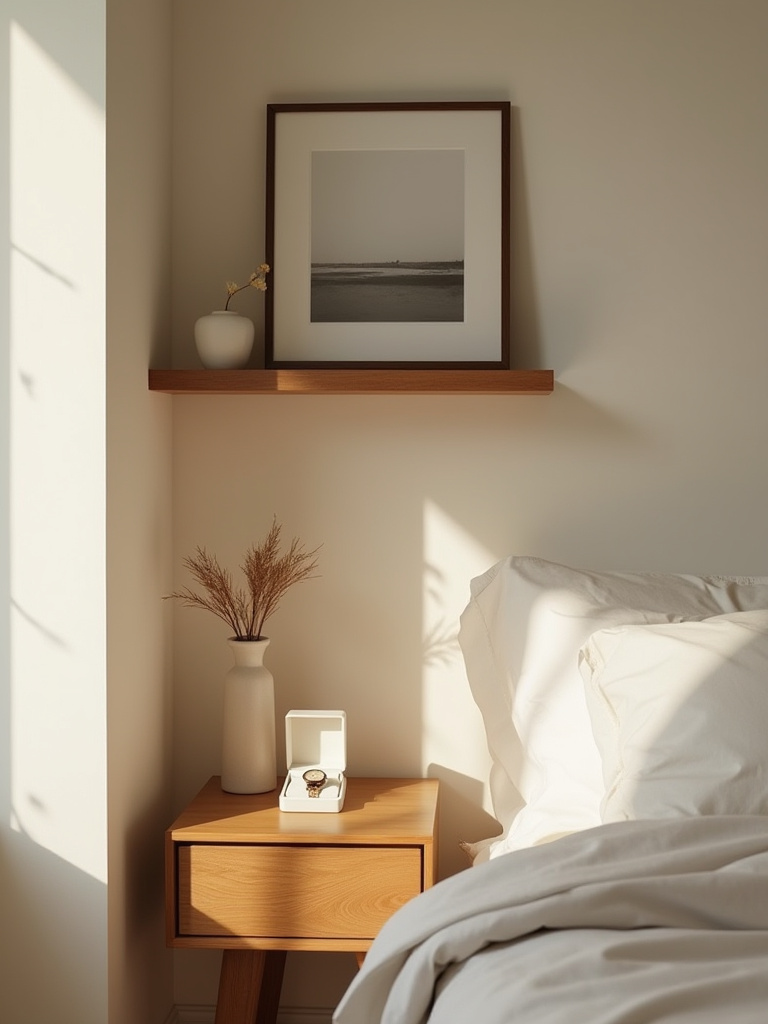
This requires you to be your own curator. Look at your current decor and ask of each item, “Do you truly lift my spirits?” If the answer is anything less than a resounding yes, it has no place in your inner sanctum. I have just three things on my own dressing table: a framed sketch my husband did on our honeymoon, my grandmother’s silver-backed hairbrush, and a small ceramic bowl I made years ago. They are a quiet, constant source of joy.
Next, bring a bit of the outside in.
17. Integrate Live Plants for Air Purity and Vitality
A touch of living green is essential. Plants are not just decorative; they are quiet, living sculptures that purify the air and provide a vital connection to the natural world. In a world of hard surfaces and synthetic materials, the organic form of a plant is a welcome relief to the eye. Certain varieties, like the endlessly forgiving Snake Plant or a graceful Peace Lily, are particularly good at filtering toxins from the air.
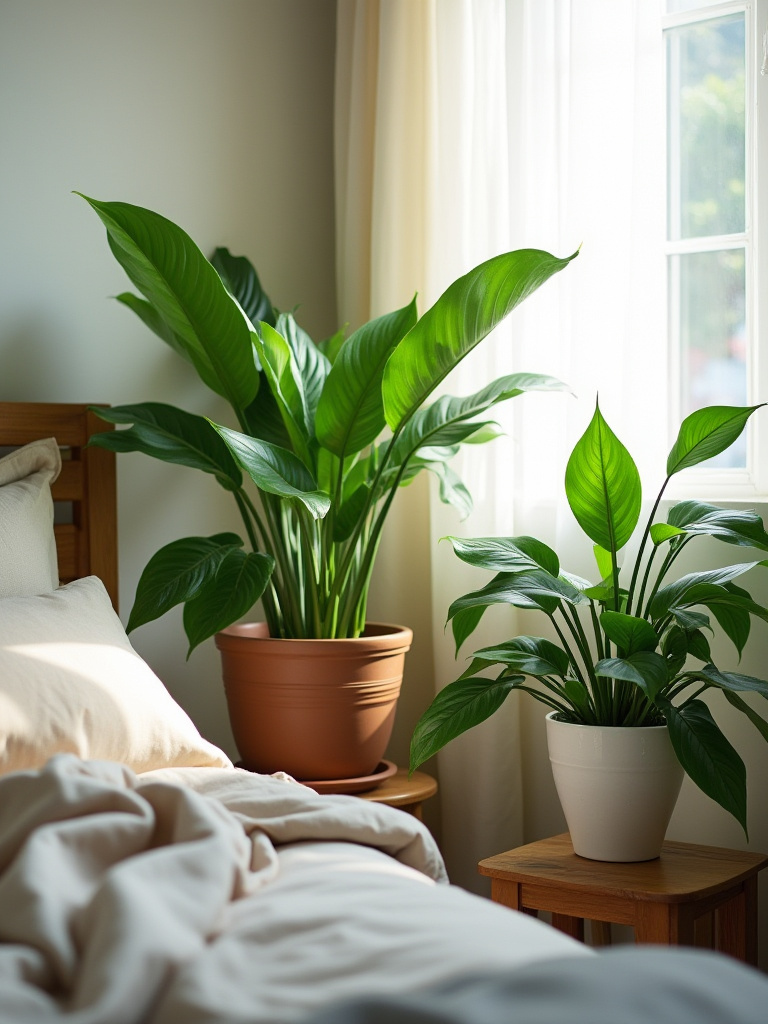
Don’t turn your bedroom into Kew Gardens. A single, well-chosen specimen in a beautiful pot is often more impactful than a crowd of smaller ones. I particularly love the architectural quality of a Fiddle Leaf Fig in a corner, or the trailing romance of a Pothos on a high shelf. Tending to a plant, even in a small way, is a calming ritual in itself. It is a gentle reminder of the slow, steady rhythms of nature.
Now, carve out a space for a specific purpose.
18. Designate a Tranquil reading nook or Meditation Spot
If you have the space, even a small corner, dedicating it to a specific quiet activity is a powerful psychological tool. It creates a boundary, signaling to your brain that the bed is for sleeping, and this corner is for reading or contemplation. This prevents the “mental creep” where the worries and stimulation of waking life follow you under the covers.
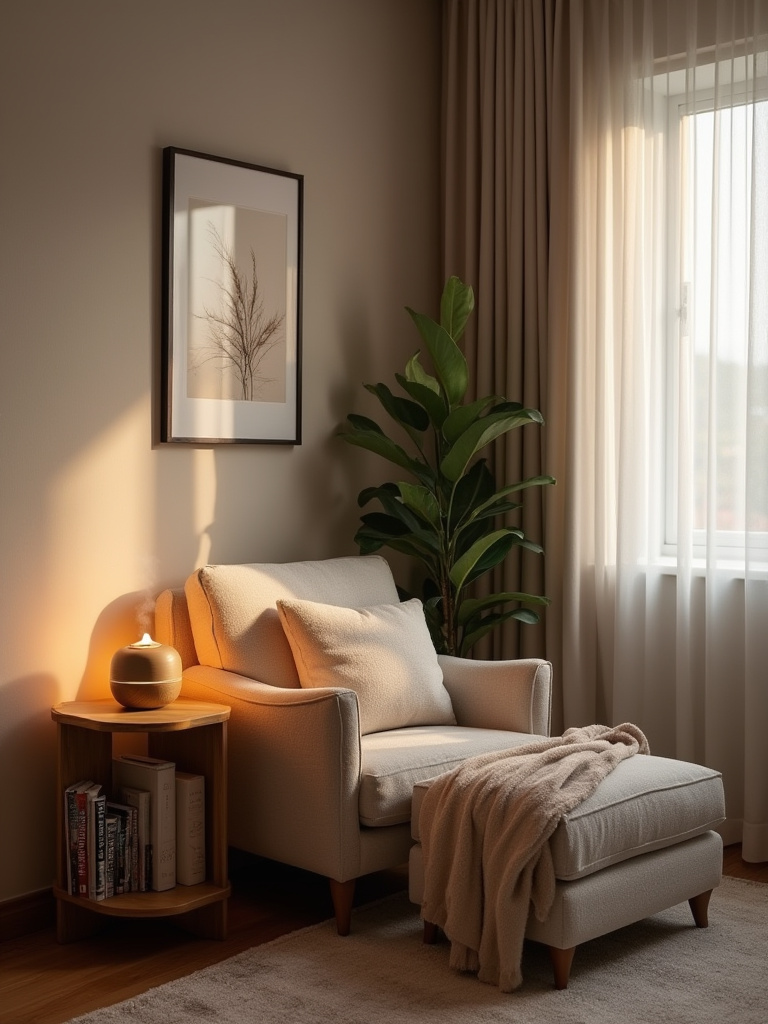
It doesn’t need to be grand. A comfortable armchair, a good reading light, and a small side table are all that is required. For a Bloomsbury-inspired project, we tucked a small, deep armchair upholstered in a faded floral linen into an unused alcove. With its own lamp and a sheepskin rug, it became a beloved “nest” for the homeowner, her private world within a world. It’s about creating a destination for peace within your ultimate destination for peace.
To elevate that nook, consider this gentle, auditory addition.
19. Incorporate a Water Feature for Gentle Auditory Relaxation
This may sound a touch eccentric, but hear me out. A small, high-quality indoor water feature can provide the same benefits as a natural soundscape, but with a more constant and contained presence. The gentle, trickling sound is wonderfully soothing and incredibly effective at masking higher-frequency background noise. It is the sound of life and tranquility.
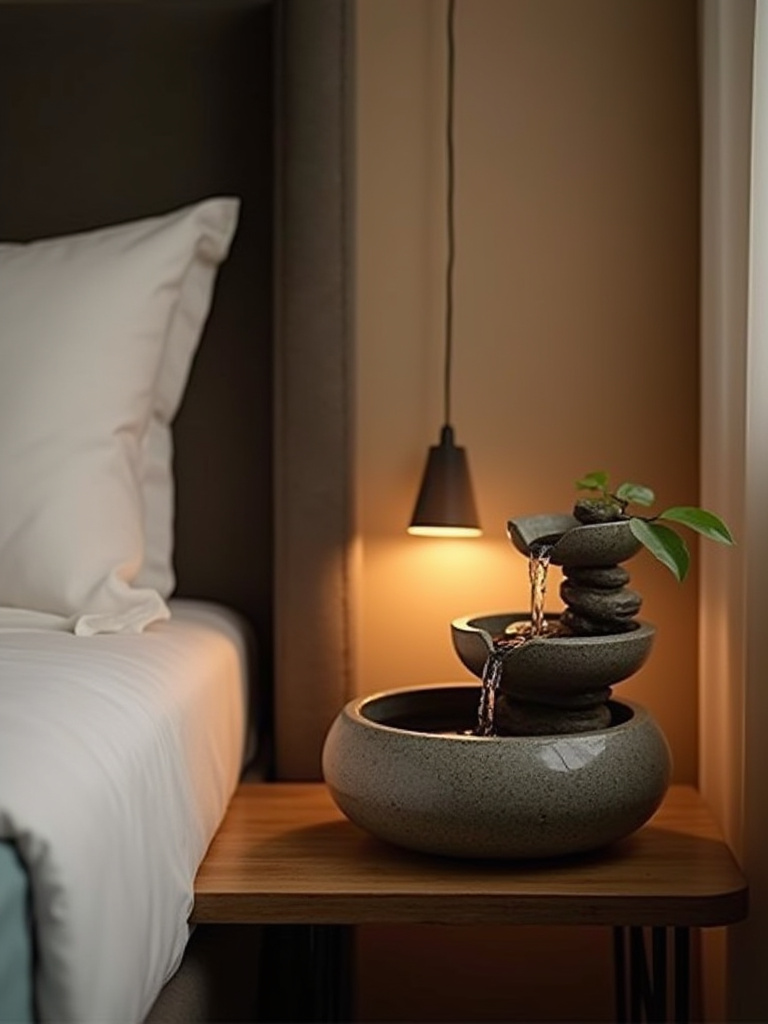
The absolute key is to choose a model with a silent pump, as the hum of a motor would defeat the entire purpose. A simple tabletop sphere or a slate wall fountain can be a beautiful, sculptural object in its own right, adding a spa-like quality to your quiet corner. I find the sound promotes a state of light hypnosis, perfect for easing into meditation or simply letting the mind wander peacefully.
Now, for the serious investments that pay dividends in rest.
Advanced Relaxation: Upgrades & Integrated Wellness
These are the strategic, foundational investments that form the bedrock of restorative sleep. They may lack the decorative flair of a new cushion, but their impact on your physical well-being is orders of magnitude greater. Do not neglect them.
20. Invest in a High-Quality Mattress and Ergonomic Pillows
This is, quite simply, the most important purchase for your home. You spend a third of your life on it. A sagging, unsupportive mattress is a recipe for back pain, restless nights, and chronic fatigue. A mattress is not a luxury item; it is essential medical equipment for your health. Research your options, understand your sleep style, and invest in the absolute best you can afford.
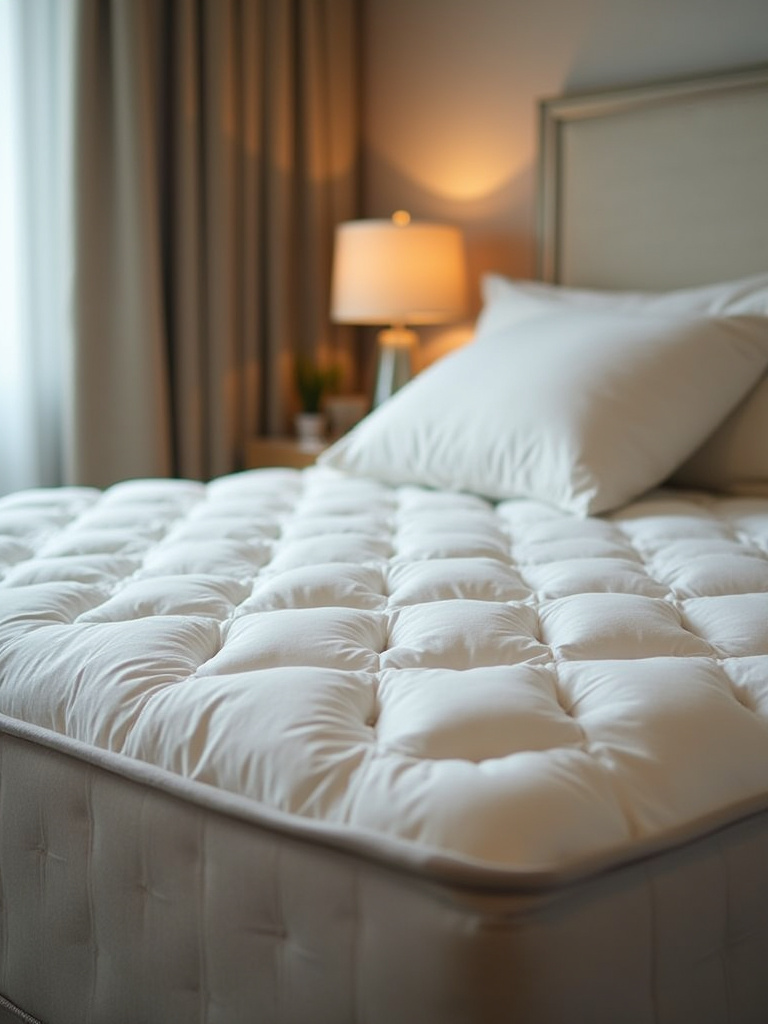
The same goes for pillows. A pillow that doesn’t properly support your neck’s alignment is the cause of so much morning misery. Last Tuesday, I watched a client lose thousands in productivity because he was so crippled with neck pain from an ancient, flattened pillow. Investing a few hundred pounds in a proper ergonomic one solved the issue in a week. Find a reputable supplier, get properly fitted, and guard your new mattress and pillows with your life.
With your body perfectly supported, let’s bring a touch of discreet intelligence to the room.
21. Implement Smart Home Ambiance Controls for Seamless Relaxation
I’ll confess, I was a sceptic. The idea of a “smart” bedroom felt rather cold and soulless. But I was wrong. Used with intelligence and discretion, technology can be a wonderful butler for your well-being. The true luxury is in automation—creating a ‘scene’ that you can activate with a single command.
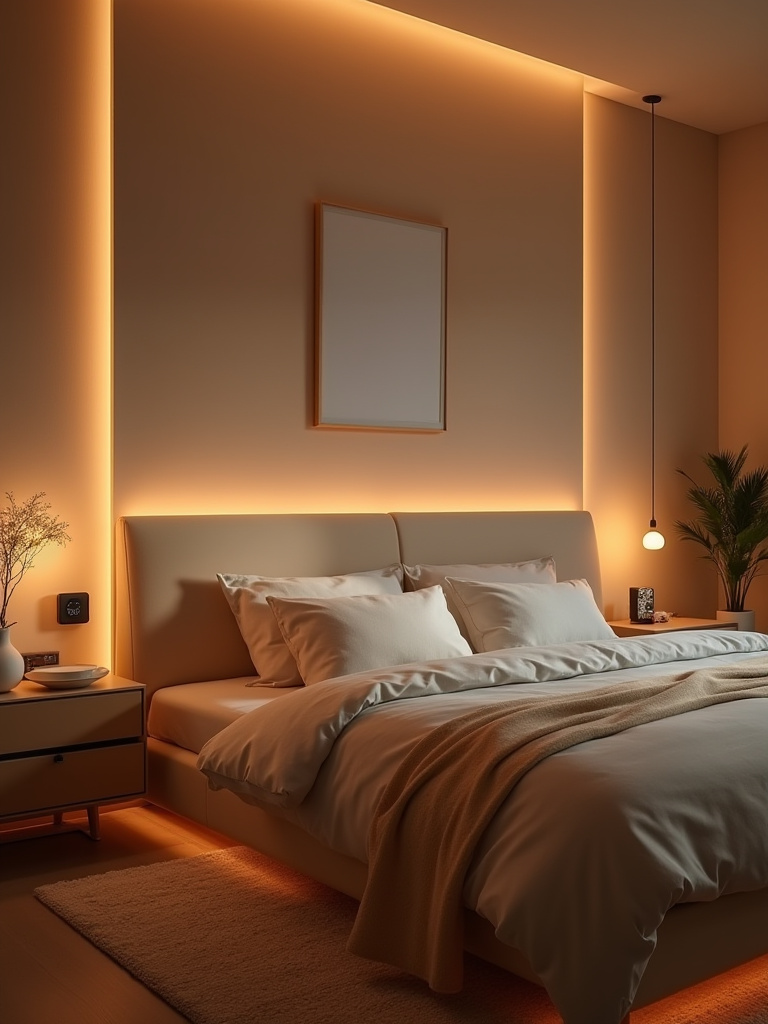
Imagine saying “Goodnight” and having the lights slowly dim to a warm glow, a calming playlist begin to whisper from a hidden speaker, and the thermostat adjust to the optimal temperature for sleep. It removes all the small, fiddly adjustments and friction from your wind-down routine, allowing a seamless transition into relaxation. The trick is to ensure the technology is invisible and serves the ambiance, rather than dominating it. It should feel like magic, not a mission to the Starship Enterprise.
And now, for the most crucial—and free—upgrade of all.
22. Establish a Screen-Free Zone for Pre-Sleep Winding Down
This is the modern asceticism, and it is absolutely vital. The bedroom must be a sanctum, and our glowing, endlessly demanding screens are the wolves at the gate. The blue light they emit actively sabotages your body’s ability to produce melatonin, and the endless scroll of news and social media keeps your brain in a state of agitated arousal. Banish them. An hour before bed, all screens must be turned off and, ideally, charged in another room.
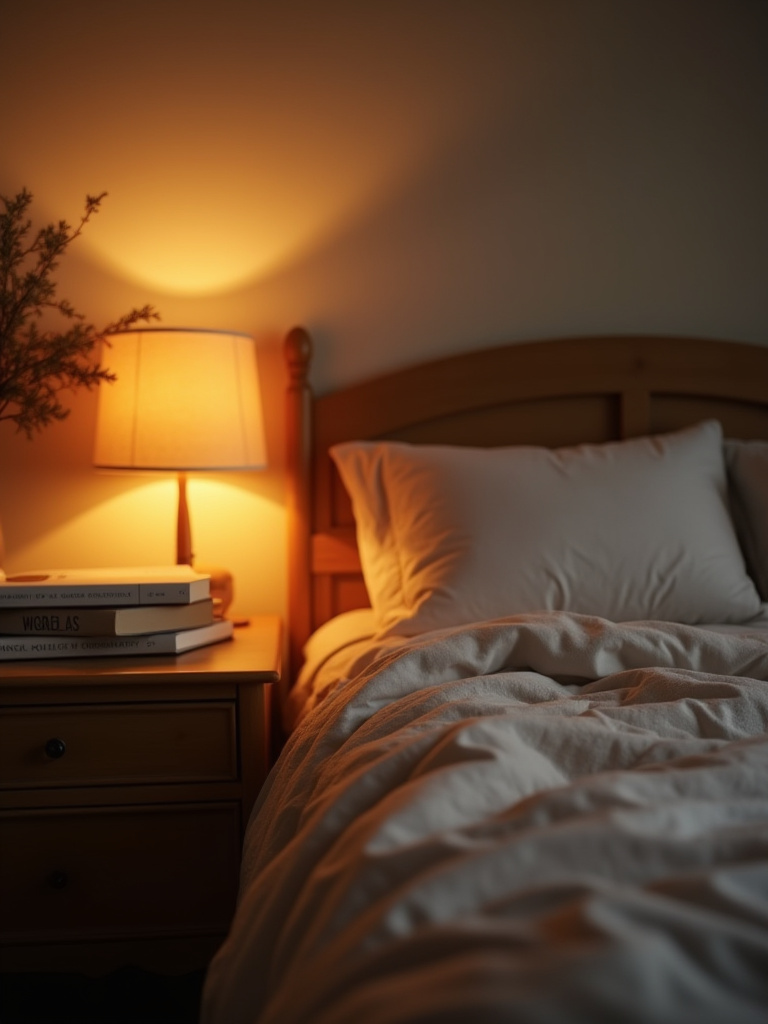
This requires discipline, I know. The shortcut you wish you’d known is this: buy a beautiful, old-fashioned alarm clock. This removes the primary excuse for having your phone by the bed. Replace screen time with an analogue activity: read a physical book, write in a journal, talk to your partner, or simply lie in the dark and listen to the quiet. Reclaiming that final hour of your day from the digital realm is the ultimate act of self-care.
Finally, let’s address the very air you breathe.
23. Add an Air Purifier for Optimized Breathing Comfort
This is the final, invisible upgrade that makes a world of difference, especially for city dwellers or those with allergies. Indoor air can be shockingly polluted. An air purifier with a proper HEPA filter works silently through the night to remove dust, pollen, pet dander, and other irritants, allowing you to breathe more deeply and easily. This leads to less congestion, less snoring, and more oxygen reaching your brain for truly restorative sleep.
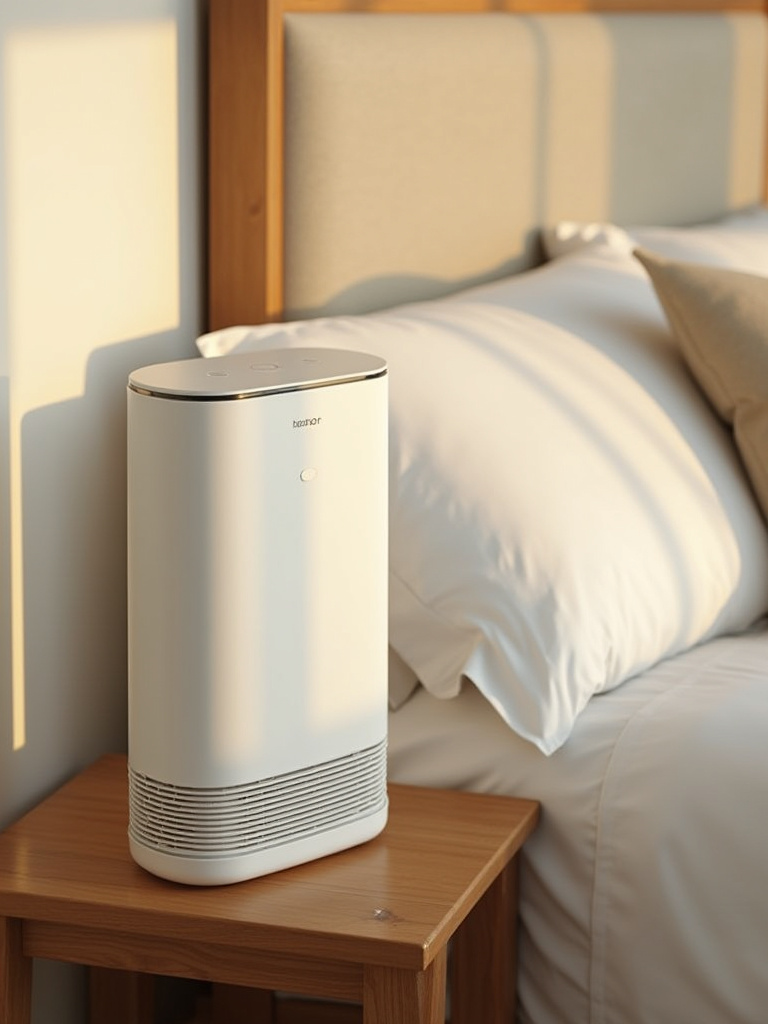
Look for a model that is rated for the size of your room and, critically, has a quiet ‘sleep mode’. A noisy purifier is as bad as no purifier at all. The difference is subtle but profound. Waking up without a stuffy nose and with a feeling of clear-headedness is a remarkable feeling. It is the final touch in creating an environment that is not just aesthetically pleasing, but holistically healthy.
Conclusion: Embrace Your Sanctuary, Reclaim Your Rest
So there you have it. Creating a bedroom that is a true sanctuary is not a matter of following trends or buying a checklist of ‘cozy’ items. It is a thoughtful process of subtraction, curation, and the artful layering of sensory comforts. It’s an investment in your own peace of mind. In a world that screams for our constant attention, your bedroom should be the one place that asks for nothing but offers everything in return: quiet, restoration, and the simple, profound luxury of a good night’s sleep.
Don’t be overwhelmed. Choose one small act of rebellion against the chaos. Banish the clutter from your nightstand tonight. Buy a proper reading lamp. Take that first step. Your future, well-rested self will be eternally grateful.
